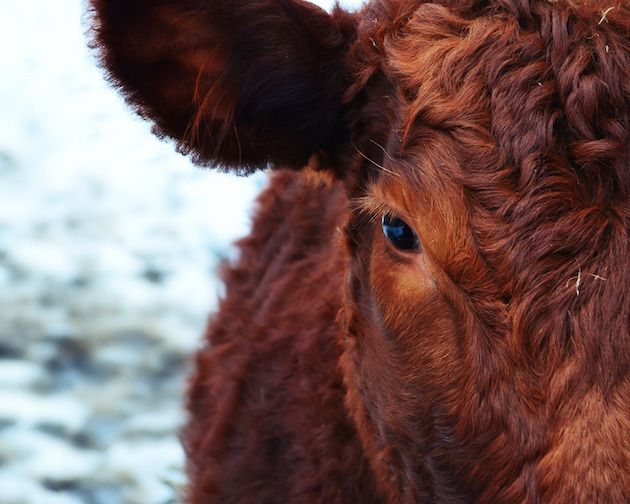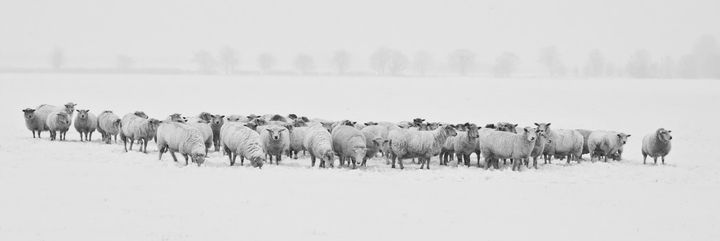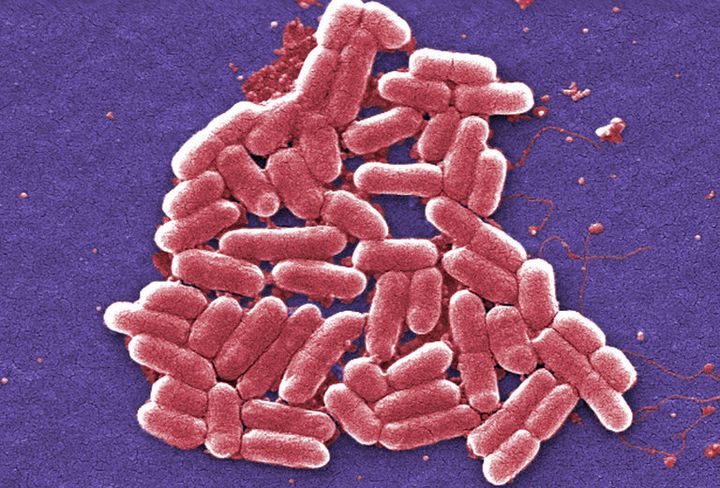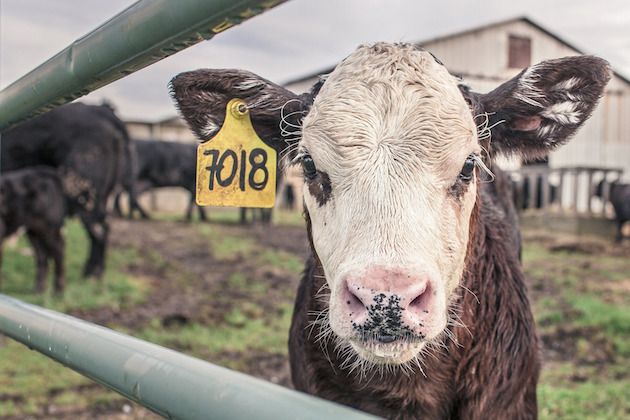Let’s be clear. How we decide to feed ourselves has grand and profound impact. Not just on our own health, but on that of others in our communities & societies; on the well-being of animals in and out of the food chain; and on the vital spokes of the microbial web acting as the hub for which the entire living world revolves. The imprint of these personal choices now so interrelated to a shared system health helps define a “true cost” of food which is destined to be the basis of future economies in which our mouths take lead role in natural selection.

As demand for food sets to grow exponentially with unprecedented global population expansion, we’ll need to sharpen our eye to these true costs as they beget a more complete and accurate plan to sustain us and our surroundings moving forward. You see, at the top of the food chain, we are what we eat - which effectively means that as we vertically integrate all trophic levels in our supply chain and waste stream - if we want to preserve our own health, if we have a plan of succession for our kin - we must embrace this responsibility by taking accountability for our food, and thus properly shepherd future system sanctity.
What’s our motivation? Well, if we don’t evaluate the overall system health through each link in the chain, shortcuts that continue bend natural order will bite back, and in numerous ways over the long haul. The solutions come from evaluating this as more than just a granular foodstuff problem, but as a human systems problem. We must align diverse drivers across numerous industries to connect the impact of our food production system on human and public health, on medical care, on planetary stability for future generations, on the financial and insurance industries, and over concerns with national security. I’ve come to realize that by decommissioning a stagnant reductionist approach that assess food and nutrition with only linear perspective for instead a narrative related to that of broader human impact - this is in fact impetus for change. As such, the onus for this change shifts, and intensifies. For the systems thinkers and designers out there, that’s second nature. For others, myself included, it soon becomes commonsense when the facts are revealed.

With 7 Billion people sharing the planet now, and set to be nearly 10B within a generation, there are certain corrosive and highly susceptible agents in food & agriculture that’ll drive change with near immediacy. Building off the assertions in the OneHealth of Future food series, I felt it worth detailing one of these fundamental flaws in food production that festers with concern for diverse stakeholders in broad arenas of human impact. Once we begin to evaluate these facts, as I’ll present in this four-part essay series, it’ll become clear that the single largest sector of domestic food production is in dire need of systems reform. It is an industry that now faces the backlash of problems deeper than just food itself, but from unintended consequences of on-farm shortcuts affecting other interrelated industries. What’s exciting about this - and that may sound like an odd statement to some - these egregious abuses instituted in domestic animal agriculture defines the potential for a massive industry disruption though innovation economies built on nuanced systemic solutions in farming focused on animal welfare. These solutions have vast positive influence on diverse stakeholders in and out of food.
Superbugs in human care spawned by on-farm shortcuts
Making up 99% of total food animal protein production Stateside, confined feedlot environments now use 80% (by volume) of all antibiotics consumed in the US. The problem is - Antimicrobial Resistance (fka AMR or superbugs) in human care is directly tied to the chronic and perpetual slow dosing of drugs to improve weight gain and stocking density in conventional meat production. Earlier this spring, the first US patient to be infected with bacteria that are resistant to our last line of antibiotic defense - an omen of apocalyptic concern as these cases will only intensify in volume and potency - it’s what biology does well. Despite the States being late to the game in recognizing the problem, there are well over a hundred reports from around the world connecting AMR superbugs in human care to chronic on-farm antibiotic usage for non-therapeutic reasons. Processing 9.3 Billion terrestrial animals annually, this is a grand and systemic problem having impact on human and public health, financial markets and domestic national security. Already at 2M AMR superbug cases annually, and costing the US healthcare system $24B and 23,000 lives - this near singular commitment to chronic on-farm application of antibiotics in food animals has spawned international concerns over superbugs which set to cost global GDP $100 Trillion by 2050, causing more deaths than cancer and diabetes combined.

Simply, as our production models have scaled, the ripple effect of farm-spawned resistance threatens modern human care as we know it. Worse off, it’s not going to get better. China now Processing 9.1B land animals yearly and is predicted to more than double that by 2030. China currently utilizing 50% of total antibiotic application on-farm. With trends in diet and farming practice increasingly more Western, increased AMR risk factors on health and stability with the gross volume of antibiotic usage in meat production throughout China, and the rest of the world, will far outstrip the current and unfederated problem with US application. With no restriction to border nor economic status for superbugs, this is global pandemic destined for everyone’s backyard.
I often remind people, like you good folks reading this post, if we’re honest with ourselves, the food animal health revolution should be instigated by the basic human response of Noblesse Oblige (nobility obliges). The intrinsic internal voice we hear for respecting the sentient beings we derive nourishment from is hardwired into us all. Your line wouldn’t be here unless at some point in your ancestry food animals didn’t get respect as if your kin’s lives depended on it, because they did. But overtime, through greater separation from production and the supply chain - values can be compromised. Awareness is part of the change, but like many conscious consumers who’ve seen the factory farming exposés - by extending limited solutions of change, nor finding ways to align the direct effects of these shortcut practices on the individual consumer/viewer - calling on this hardwired good nature is just not moving the needle in food animal production. As such, I believe the appeal of change must be tailored to the pragmatic thinker, where the true costs of current food animal production include the direct impact on interrelated systems of human, public, financial, ecological and environmental health. When packaged as this recipe of acute impact on broad stakeholders - social venture of humane treatment comes to bear with greater ease.

Systems thinking is challenging, and can often seem too robust especially when dealing with mature and sophisticated infrastructure like large-scale food production. This ‘ask’ requires a deeper appreciation for these unintended consequences, complete with the inclusion of short & long-horizon expenses to be incurred. Mostly, not allowing the true costs of food to be externalized by the current status quo of compromised values is an essential next step in our adoption of accountability. It makes the requirement for better food immediate and it moves the needle. If we don’t start to respect this; if we don’t find new and creative ways to engage the consumer as the driving force of change; if we don’t take care of these food animals nearest to our health - a post antibiotic world of human care will force a realization that our lives are again dependent on the wellbeing of these sentient beasts as we all revolve and evolve as spokes in the microbial hub.
In forthcoming parts of this short essay series I’ll detail (part 2) precedent for successful food animal system change, (part 3) the science and evidence behind the concerns, and (part 4) how in the US we can tackle this omen of apocalyptic concern through what we do best.
